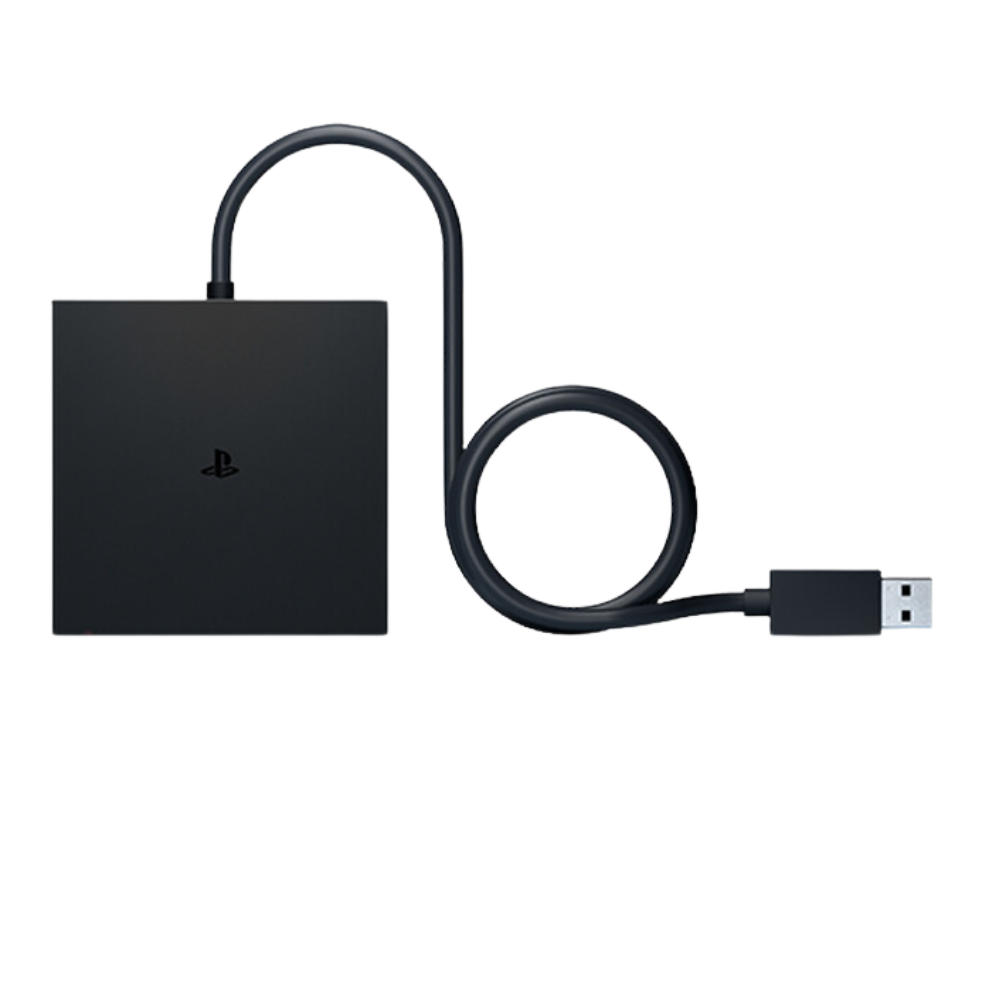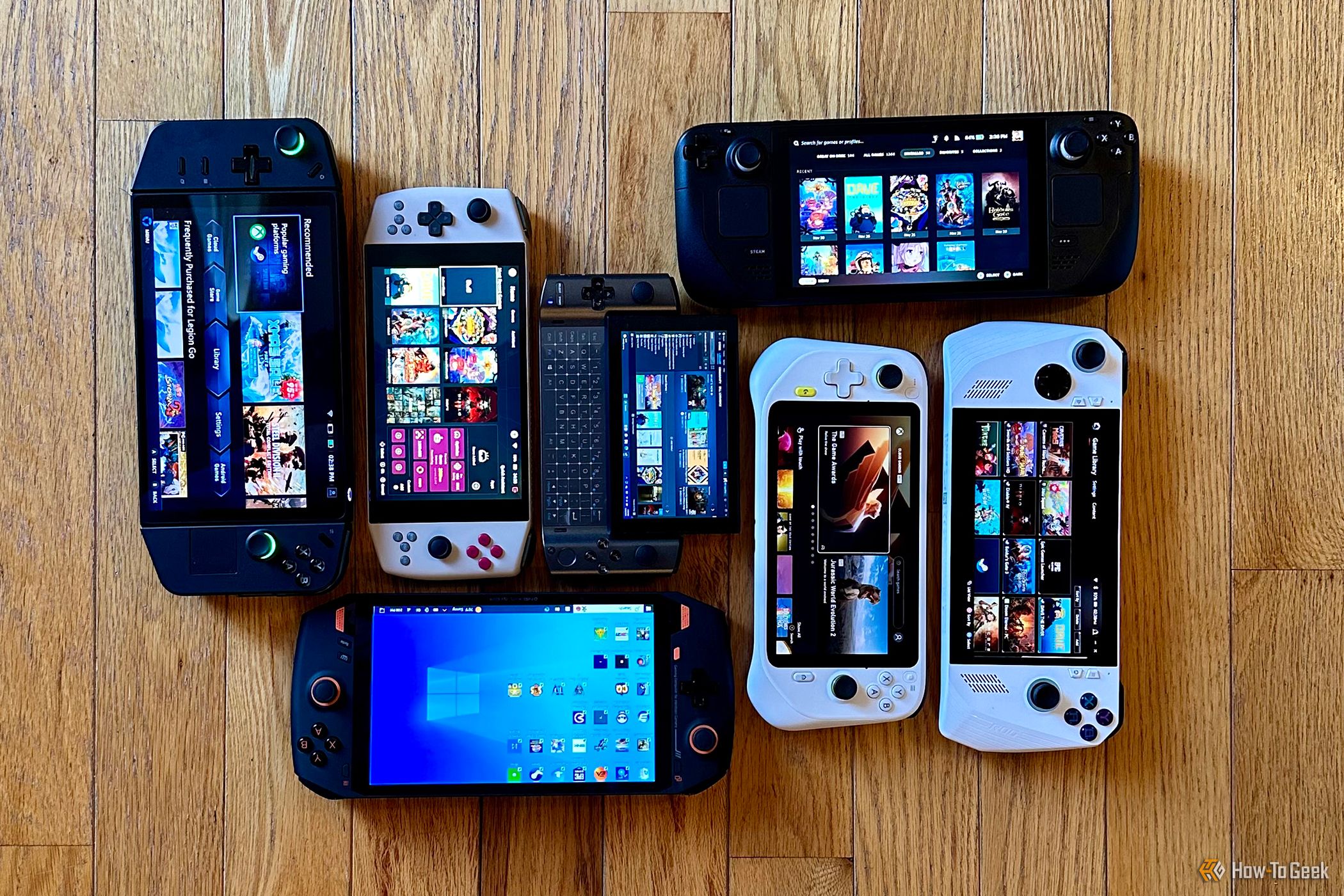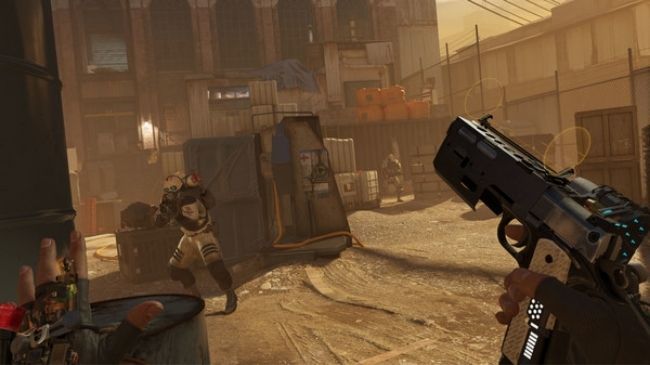Key Takeaways
- Handheld PCs have hardware capable of running VR, even without top-tier specifications.
- Connectivity is a challenge with most handheld PCs only having one USB-C port, necessitating the use of docks or dongles.
- Lower settings and battery management are necessary for comfortable gameplay, but handheld VR provides better experiences than standalone VR.
We have PC VR, and we have standalone portable VR, but what about handheld PC VR? Can you hook up a VR headset to your handheld PC and play VR games? For the most part, the answer is “yes”, but, of course, you’ll need to jump through some hoops, and make a few sacrifices.
Before anyone says anything, yes that’s just a screenshot of
Half-Life Alyx
on my handheld PC above. It’s just illustrative.
You
try to photograph a computer while also being in VR.
Handheld PCs Have Better Hardware Than You Think
When we think of PC VR specifications, the general impression is that you need quite a hefty system to make it all work well, but even the latest Quest 3 headset has a GPU only equivalent to the GTX 960. The most popular handheld PC GPU, the Z1 Extreme, is quite a bit more powerful than that card, so clearly some VR should be possible with it. Even when a game like Half-Life Alyx has an official minimum spec higher than what you’ll find on a handheld PC, things work better than you’d expect. Trust me, I tried it. However, there are some things to keep in mind before hooking things up to your own little handheld.
From left to right: Lenovo Legion Go, AYANEO 2021 Pro, Valve Steam Deck, GPD Win3, Logitech G Cloud, Asus ROG Ally, OneXPlayer 1
There Are Connectivity Challenges
The biggest issue, in my opinion, is connectivity. I’m lucky enough to have a Lenovo Legion Go, which has two USB-C ports, but most handheld PCs only have one. Which means you’ll need to use a dock or dongle of some sort to hook up your headset and connect to power. Though you can play on battery, you won’t be playing for very long! Whether a power bank or mains, it’s a good idea to get some external power hooked up. For most VR games, we’ll want to play at the highest performance settings.
A VR headset that requires USB-C with DisplayPort won’t work either, if your handheld PC does not support this protocol, but modern models should. Sadly, my PS VR 2 with PC adapter does not support USB-C of any kind, so I have to use my Quest 2 headset. However, this opens up another option. Instead of connecting the headset directly to the handheld PC, Quest 2 and later users have the option of wireless VR. Either through the native Air Link feature, or via the Steam Link App for Quest. You may want to use a USB Ethernet adapter to connect the handheld PC to your router, but modern handheld PCs also tend to have up-to-date Wi-Fi, so it’s worth trying it totally wireless to see how it works for you.

PS VR2 PC Adapter
The PS VR2 PC Adapter turns a PS VR2 VR headset into a Steam VR PC headset, so you can play PC VR games as easily as with any PC VR headset.
You Have to Be Aggressive With Settings
To get comfortable frame rates in some games, you’ll have to scale down the settings substantially, but that doesn’t mean these games still won’t look good. For some games, like Star Wars Squadrons, you can even use the handheld PC as the controller, which is true for any VR game that uses a gamepad, I suppose.
Modern VR games also have all sorts of tricks that help them perform better on low-end hardware, such as better resolution scaling tech, or foveated rendering. Though in that last case, it’s not the sophisticated eye-tracking version used on the PlayStation 5, of course. My suggestion is to bottom out the settings, and push them up until the game is no longer comfortable to play. The exception here is texture detail. Even Half-Life Alyx is happy with 6GB of VRAM, and most handheld gaming PCs have at least that much to spare, so medium or high texture details is rarely an issue.
Playing Alyx on my Legion Go using the Steam Link app, I used the “low fidelity” preset and the odd loading stutter notwithstanding, the game was eminently playable for the hour or so I tried it.
It’s Still Better Than Standalone VR Experiences
Whether VR on a handheld PC is good, or worth it depends on your perspective. If you happen to own a standalone headset like the Quest 2, using it tethered to a handheld PC represents a significant upgrade. So, if you’re traveling with both devices, there’s no harm in hooking your headset up and enjoying a better mobile experience.


